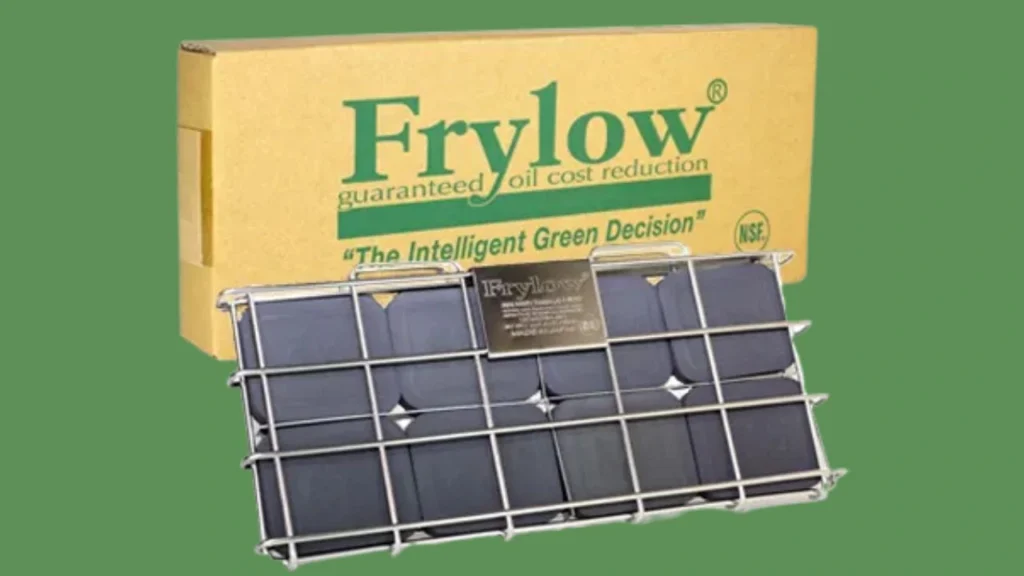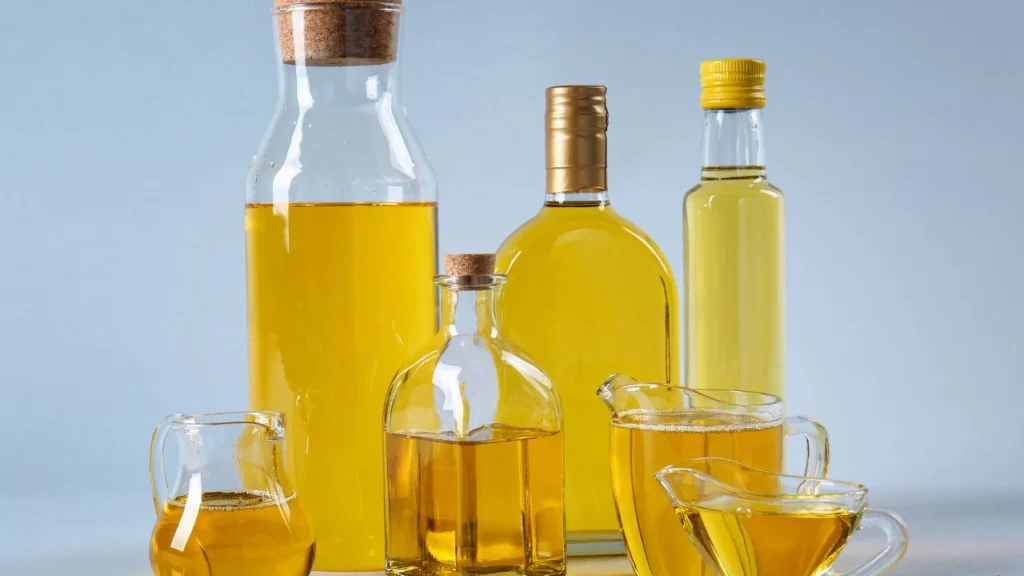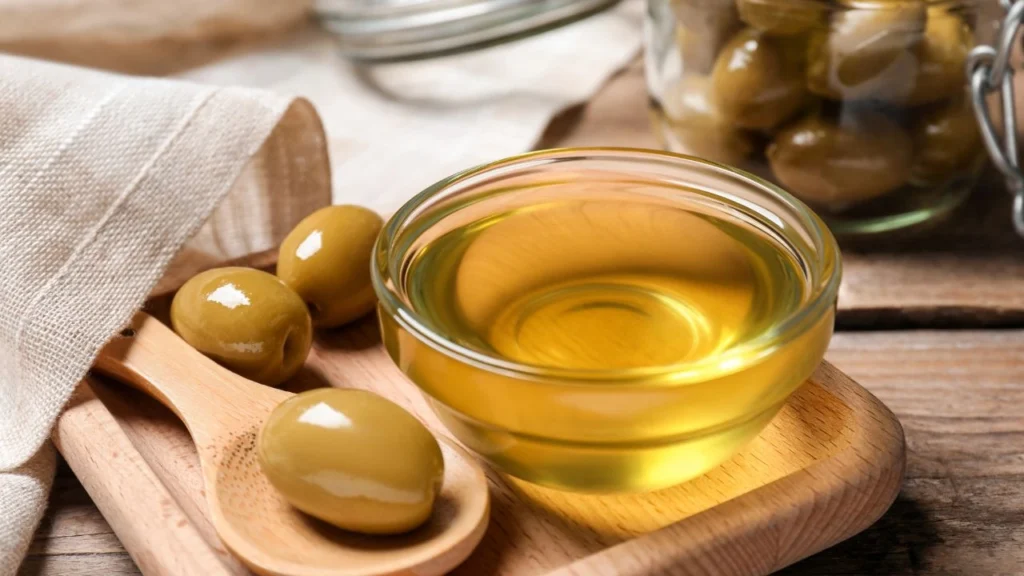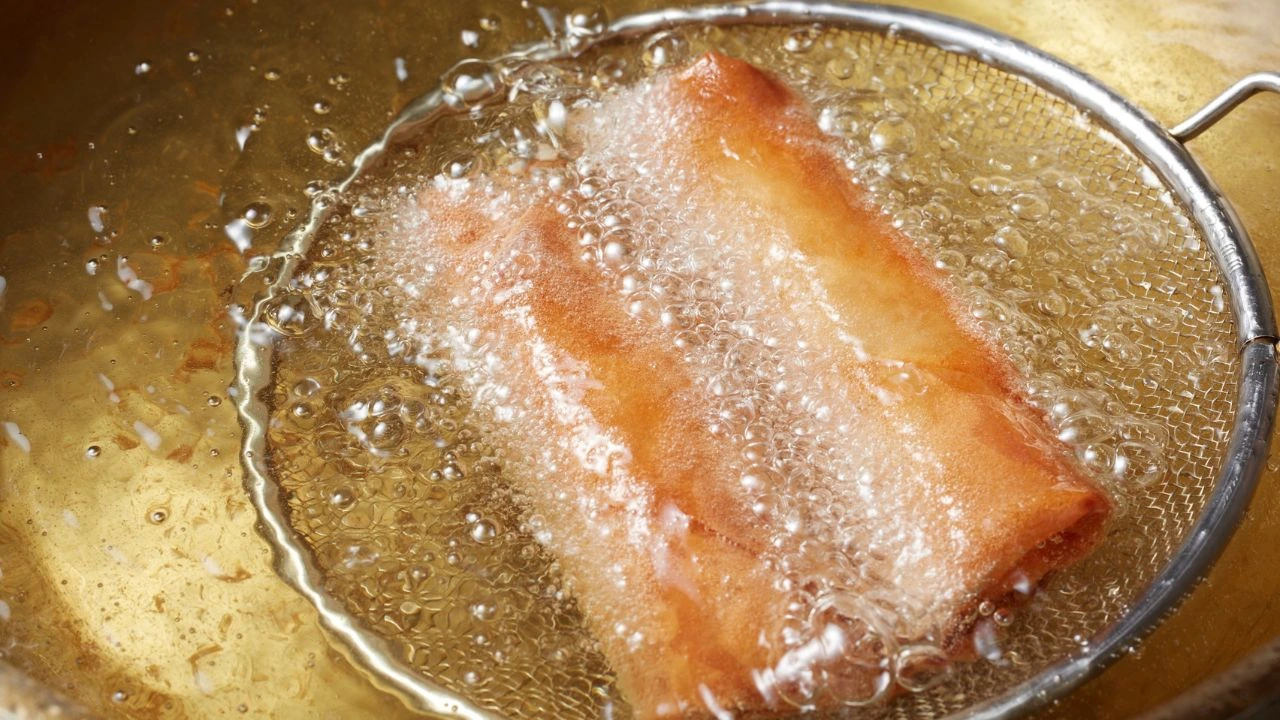Slash fry-oil costs and elevate your dishes? That’s the Frylow promise. This game-changing device cuts oil consumption by up to 50%, extending oil life and boosting food quality. From bustling diners to high-stakes culinary showdowns, Frylow adapts to any kitchen, oil type, and cooking style. A 5-year warranty guarantees peace of mind with this essential investment for a cost-effective, sustainable kitchen.
Overview Of Cooking Oils
Cooking with the right oil can significantly influence the flavor and texture of fried food. Each oil type offers distinct benefits and applications in the kitchen, making the type of oil selection crucial.
Types Of Cooking Oils
There are numerous oils to choose from, each with unique properties. Coconut oil offers moderate-heat roasting, making it ideal for sautéing and roasting. In contrast, vegetable oil has a high smoke point, suitable for deep-frying due to its neutral flavor.
Olive oil, especially extra virgin, contains heart-healthy monounsaturated fats, adding a rich taste to dishes. Canola and soybean oils are common in commercial kitchens for their balance of cost and functionality, providing a practical option in large-scale frying operations.
Nutritional Aspects Of Different Oils
Nutrition plays a vital role in choosing the right cooking oil. Olive oil leads with its monounsaturated fats, promoting heart health. Coconut oil, although high in saturated fat, provides medium-chain triglycerides that might offer potential health benefits.
Canola oil boasts low saturated fat and is a staple for those seeking a healthier frying option. Soybean oil not only supports cholesterol management but also contains omega-3 fatty acids beneficial to overall health. Selecting oils based on their nutritional profile can aid in crafting a meal that’s both delicious and nourishing.
Common Uses In Cooking
Understanding the common uses for each oil helps optimize both flavor and texture. Coconut oil is great for baking and adding a tropical flair to dishes. Vegetable oil excels in a variety of cooking methods like frying, baking, and grilling, thanks to its versatility.
Olive oil is perfect for dressing salads or as a finishing touch, enhancing flavors with its robust, fruity profile. Fry-oils like canola are preferred by food scientists for their neutral taste and high smoke point, making them ideal for frying purposes. Choosing the correct oil for each cooking method ensures food reaches its full potential.
Frylow’s Compatibility With Different Oils

Using Frylow enhances various types of oils in professional kitchens, extending their life and improving the taste and texture of fried foods. Whether using vegetable oils, animal fats, or specialty oils, Frylow’s capabilities to improve the frying experience are notable in several key ways.
Frylow And Vegetable Oils
I find that Frylow’s technology works exceptionally well with vegetable oils like canola, soybean, and sunflower. Its photo-catalytic ceramic device helps reduce the rate of oil breakdown, effectively extending the oil’s usability. This is particularly beneficial in high-volume restaurant kitchens where oil expenses can be significant.
Vegetable oils already have a decent smoke point, but the ceramic device helps maintain that usability even after multiple uses. This not only saves costs but also ensures consistent frying results. Pairing Frylow with these oils also enhances the lightness and crispiness of fried items, making it an indispensable tool for dedicated chefs looking to optimize their kitchen operations.
Frylow And Animal Fats
When it comes to animal fats like lard or duck fat, Frylow shows its versatility and adaptability. These fats have unique flavor profiles that many chefs cherish for particular dishes. However, they are prone to faster degradation due to their lower smoke points.
Using Frylow in this context offers a significant advantage. I notice that it helps preserve these fats’ usability, reducing the frequency with which you need to replace them. This means not only cost savings but also an opportunity to maintain the rich, distinctive tastes that animal fats can bring to specific dishes. Ensuring the longevity of these oils without compromising flavor is a crucial benefit for many traditional recipes.
Frylow And Specialty Oils
Specialty oils, such as olive oil or coconut oil, bring unique challenges and opportunities in frying. Frylow’s compatibility extends to these types as well. It’s noteworthy because these oils often come with higher price tags and specific health benefits that chefs want to maintain.
By using Frylow, I see that the flavors and nutritional properties of these oils can be better preserved during frying. This is crucial for establishments that focus on health-conscious or gourmet dining. The device’s ability to prolong the life of these specialty oils without compromising freshness or flavor makes Frylow a wise investment for diverse culinary applications.
Performance Of Frylow With Various Oils

In my daily operations, I’ve found Frylow to be an invaluable tool in extending the life of frying oil. Below, I’ll discuss how Frylow works with different types of oil, considering factors like efficiency in a deep fryer, potential savings, and impact on cooking times.
Effectiveness With Canola Oil
With canola oil, Frylow considerably extends the lifespan of the oil. Its ability to prevent thickening and maintain clarity means fewer oil changes, which reduces costs and conserves resources. Canola oil, being a popular choice in many kitchens for its neutral taste and high smoke point, benefits greatly from Frylow’s technology.
The Master Chef’s Institute recognized that using Frylow with canola oil maintains the fry oil’s condition over more frying cycles. Moreover, I’ve noticed that cooking times remained consistent, enhancing productivity and efficiency in the kitchen. This is particularly important when handling high volumes during peak service hours.
Effectiveness With Sunflower Oil
Sunflower oil, with its light flavor, is excellent for creating crispy textures. When combined with Frylow, the performance in terms of lifespan and integrity retention is remarkable. This is especially beneficial in a high-output environment where maintaining the quality of fried foods is crucial.
My experience shows that Frylow aids in keeping sunflower oil at optimum freshness for longer periods. This results in less frequent oil replacement, aligning with the company’s mission to save costs. Furthermore, the taste and texture of the food remain uncompromised, which is critical for customer satisfaction and consistent output from the kitchen.
Effectiveness With Olive Oil
Olive oil is not typically used for deep frying due to its lower smoke point; however, in kitchens where a distinct flavor is desired, Frylow’s technology extends its usability. By maintaining oil quality, Frylow helps avoid frequent changes, thus providing a cost-effective solution even in non-traditional frying situations.
The ability of Frylow to keep olive oil fresh and functional over several uses makes it a viable option for specific menu items. The addition of Frylow means that operational costs linked to expensive oils like olive can be reduced. This functionality makes it easier to consider olive oil for more frequent use without sacrificing texture and tase.
Effectiveness With Coconut Oil
Coconut oil, known for its health benefits and distinct flavor, gains a lot from being paired with Frylow. I’ve seen increased efficiency with coconut oil in deep fryers due to its tendency to degrade quickly. Frylow’s technology extends the oil’s usability, offering a healthier frying option that doesn’t compromise on quality.
The enhanced lifespan of coconut oil through Frylow adds to its appeal, especially in kitchens aiming to offer unique and healthier options. As a result, I observe less frequent oil purchases and reduced waste. The consistent cooking quality further supports high-standard outputs that are critical for satisfying discerning palettes.
Effectiveness With Peanut Oil
Peanut oil’s high smoke point makes it a popular choice for many chefs. When using Frylow, I noticed substantial benefits. The technology prevents degradation and extends the oil’s life by breaking down chemical bonds formed during frying. This results in consistent performance across many batches.
A significant advantage of using Frylow with peanut oil is the retained flavor integrity of fried foods. The consistency helps maintain productivity, ensuring foods are cooked efficiently. Frylow’s impact also reflects favorably on cost management, reducing the need for frequent oil changes without compromising on the quality or safety of the food served.
Health Implications

In exploring Frylow’s use with different oils, it’s crucial to consider health aspects like oil healthiness, frying method comparisons, and acrylamide reduction. Each topic offers insights valuable to restauranteurs and chefs aiming to optimize their frying processes.
Frylow’s Impact On Oil Healthiness
From my experience in the kitchen, Frylow significantly enhances oil healthiness by optimizing its longevity and reducing carbon footprint. Through lowering the oil’s operating temperature, Frylow helps maintain stability and reduces oxidation. This can prevent the oil from going dark quickly, keeping it fresh for a longer duration.
Key Benefits:
- Preservation of Nutritional Value: Frylow limits the thermal degradation of essential nutrients, which means the food retains more of its natural qualities.
- Environmental Impact: By reducing oil consumption, Frylow effectively decreases waste, aligning with sustainable practices and even Green Key Global standards.
Comparison With Traditional Frying Methods
Frylow represents a modern improvement over traditional frying methods. Based on my observations, it requires less frequent oil changes due to its unique filtration capability, thus minimizing the environmental impact and kitchen costs.
Highlights:
- Efficiency and Cost Reduction: Using Frylow, I’ve noticed a remarkable decrease in oil usage, lowering maintenance frequency.
- Quality and Taste: It ensures consistently high-quality fried foods, with less oil absorption compared to standard techniques.
This not only enhances the dining experience but also the nutritional profile of the food, creating a win-win for the kitchen and clientele.
Reducing Acrylamide Formation
A crucial health implication when using Frylow is its role in reducing acrylamide formation, a concern with high-temperature frying. Fryity testing by organizations like SGS and JIS has shown promising results in this area.
Reduction Techniques:
- Temperature Control: Frylow promotes consistent cooking at lower temperatures, reducing the need for excessively high cooking heat, which in turn minimizes acrylamide levels.
- Even Cooking: I’ve noticed that Frylow promotes uniform heat distribution, ensuring food is cooked evenly without reaching extreme temperatures that can lead to harmful compounds.
The overall result is a healthier cooking process that maintains food safety while delivering on taste and texture.
Economic Benefits

In the fast-paced restaurant industry, finding ways to cut costs without compromising integrity is critical. Frylow offers significant financial advantages, particularly by reducing oil usage and extending fry oil life, benefiting both traditional restaurants and mobile food service operations.
Cost Efficiency in Oil Usage
I’ve seen firsthand the impact Frylow can have on operational costs. By integrating Frylow, restaurants can witness up to a 50% reduction in fry-oil usage. Consider this: reducing oil absorption not only saves money but also ensures food remains crispier and lighter.
Energy costs decrease as Frylow allows for cooking at lower temperatures. This combination of oil savings and reduced energy consumption frees up resources, allowing you to invest elsewhere in the business.
The elimination of recurring costs due to Frylow’s simplicity adds another layer of financial benefit. No complex maintenance routines mean fewer interruptions and less downtime, something every busy kitchen can appreciate. With substantial savings on oil, the return on investment often manifests within just a few months of implementation.
Longevity of Oil Usage with Frylow
A major advantage of using Frylow is the extended life of frying oil, an essential economic factor. Frylow’s unique technology allows oil to be used for longer periods without degrading its quality.
Restaurants that typically change their oil frequently can see it double or even triple in life span. This “oil saver” not only eases financial pressure but also lessens the environmental impact by reducing waste.
In my experience, this extension aligns perfectly with modern sustainability goals. Maintaining fry oil integrity while cutting costs ensures that restaurants stay competitive, delivering excellent taste without overspending. Frylow is more than just a tool—it’s a strategy for efficiency.
Conclusion
Frylow offers a practical solution to extend the life of frying oil, allowing restaurants to save money while maintaining food quality. Frylow’s technology can help reduce oil consumption, leading to lower operational costs and healthier fried foods.
Summary Of Benefits
Using Frylow with different types of oil can significantly reduce costs for restaurant owners. By extending the life of your frying oil, you minimize waste and the frequency of oil changes. This not only saves money but also reduces the environmental impact.
Frylow’s technology is designed to maintain oil quality at lower temperatures, contributing to better-tasting food. This device leads to crispier textures and enhanced flavors, ensuring customer satisfaction and repeat business. Additionally, using less oil translates to healthier menu options, meeting the growing demand for nutritious food without sacrificing taste.
With its easy installation and low maintenance requirements, Frylow is accessible for kitchens of all sizes. Embracing this technology can optimize your kitchen operations, contributing to a more efficient and profitable restaurant experience.
FAQ
Which is the healthiest oil for frying?
Oils with more monounsaturated fats, such as rapeseed and olive oil, are less susceptible to heat. Rapeseed oil (often sold as generic vegetable oil) and inexpensive olive oil are therefore the best choices for cooking. All cooking fats add fat and calories to your diet. For more details, refer to this guide on cooking fats.
What is Frylow and how does it work with different types of oils?
Frylow is a specialized device designed to extend the lifespan of frying oil and enhance food quality by using catalytic technology to break down oil-deteriorating compounds. It works with various types of oils, such as vegetable, canola, and peanut oil, by creating a more stable frying environment, thus allowing these oils to maintain their optimal cooking properties for a longer period.
Can Frylow be used with any type of cooking oil?
Yes, Frylow can be used with any type of cooking oil. It is designed to enhance oil longevity and improve the quality of fried foods, making it versatile for various types of oils such as vegetable, canola, sunflower, and more. This flexibility allows for cost savings and efficiency across different frying applications.
What are the benefits of using Frylow with vegetable oils compared to animal-based oils?
Using Frylow with vegetable oils offers several benefits compared to animal-based oils. Vegetable oils, when used with Frylow, often maintain better nutritional quality and produce fewer harmful compounds at high frying temperatures, leading to a healthier cooking option. Additionally, Frylow can enhance the longevity and thermal stability of vegetable oils, resulting in more efficient and sustainable frying processes.
How does Frylow affect the flavor profile of different oils?
Frylow is designed to enhance the longevity and efficiency of cooking oils without significantly altering their inherent flavor profiles. By reducing the oxidation rate and maintaining oil quality, Frylow helps preserve the natural tastes of various oils. This allows the subtle flavors of oils like olive, canola, or peanut to shine through in fried foods. As a result, the characteristic flavors of these oils remain intact while the overall taste experience may improve due to the oil’s extended freshness and clarity.
Resources
https://frylow.com/how-frylow-works
https://www.marthastewart.com/8351012/best-oils-for-frying






